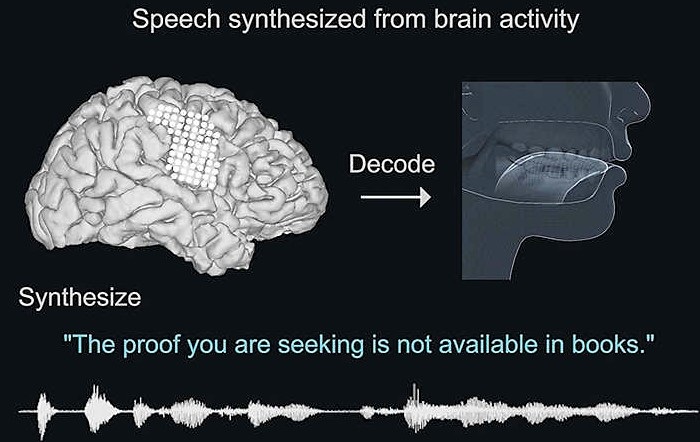
Scientists create speech from brain signals
Why in news?
- Scientists have created a virtual vocal tract completes with lips, jaw and tongue that can generate natural-sounding synthetic speech by using brain signals.
More in news
- 2 neural network machine learning algorithms:(1) A decoder that transforms brain activity patterns produced during speech into movements of the virtual vocal tract.(2) Synthesizer that converts these vocal tract movements into a synthetic approximation of the participant’s voice.
- How it works:(1) Patients are implanted with one or two electrode arrays: stamp-size pads, containing hundreds of tiny electrodes that were placed on the surface of the brain.(2) As each participant recited hundreds of sentences, the electrodes recorded the firing patterns of neurons in the motor cortex.(3) The researchers associated those patterns with the subtle movements of the patient’s lips, tongue, larynx and jaw that occur during natural speech.(3) The team then translated those movements into spoken sentences.
- Application:(1) It could be used to restore the voices of people who have lost the ability to speak due to paralysis and other forms of neurological damage.
- Challenge:(1) The biggest challenge is to find suitable patients: strokes that disable a person’s speech often also damage or wipe out the areas of the brain that support speech articulation.(2) Before operating, doctors must first locate the “hot spot” in each person’s brain where the seizures originate which may take weeks.

Source
The Hindu

